Control, consistency and cost-efficiency emerge as major themes
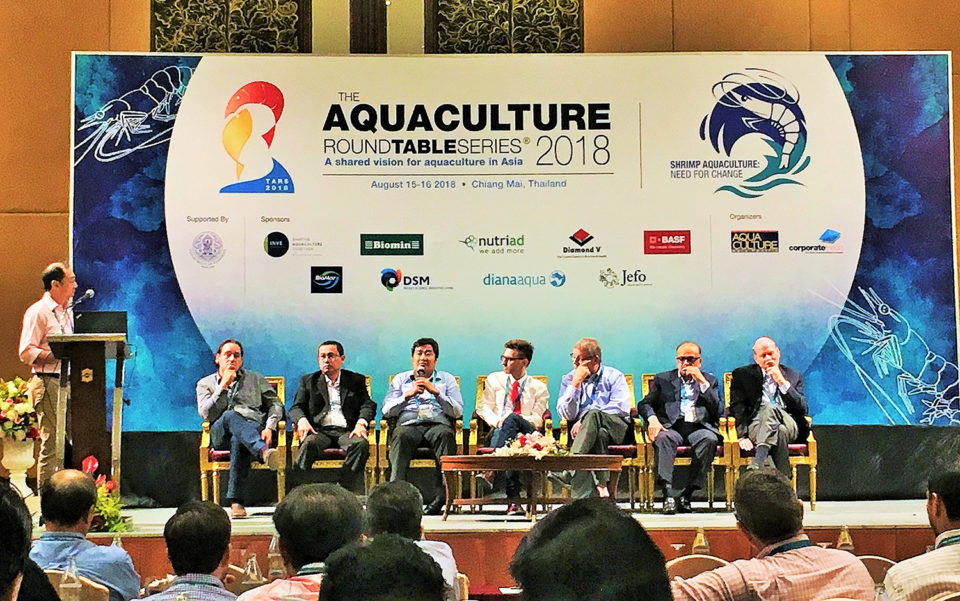
In its eighth year, Thailand’s Aquaculture Roundtable Series (TARS) 2018 was held in Chiang Mai in mid-August. Under the theme of “Shrimp Aquaculture: Need For Change,” it brought together several international experts representing key industry stakeholders and academia.
In presentations and discussions, and in interactive breakout sessions, participants assessed the current state of industry, various approaches to improve shrimp production and paths to industry change. The purpose was to examine components along the farmed shrimp supply chain where the industry can promote change – innovations in all production phases (hatchery, nursery and grow-out) and matching genetics and feeds to farm conditions and culture intensity.
Following are summaries of some of the most relevant presentations during the plenary sessions.
Overview of Asian shrimp farming
In his keynote presentation Robins McIntosh (executive VP, Charoen Pokphand Foods, Thailand) discussed the state of shrimp aquaculture in Asia. The main topic of conversation in shrimp farming forums is oversupply and declining farm gate prices, he noted. It stood in contrast to the discussions during the 2017 Asia Pacific Forum, where the focus was on diseases and their impact on production.
In the supply/demand balance, a reduction in supply results in better prices. With shrimp farming, this incentivized and supported two activities: development of new ponds and new farming areas, and the application of new technologies in existing farms to improve farm efficiency. Their combination has resulted in a rapid gain in world shrimp supply over the past two years, but while production was increasing, the global average in shrimp costs has also risen.
“We will face a polarized world: farmers who have genuinely not just increased production versus farmers and countries that have focused on, not the development of new areas, but the efficiency improvement of existing culture areas and farms,” McIntosh stated.
The history of the industry shows us that with every major disruption in world shrimp supply, and the subsequent increase in shrimp prices, rapid innovation created the next growth phase in shrimp supply. Today we are experiencing a growth phase but much of this growth is not through innovation but by developing new farming areas, so this may be a “false” increase in supply that could slow down or even slightly reverse.
The necessary change will be to reduce pond size, increase yields, diets and genetics that result in fewer days of grow-out, genetics that create even better tolerance to more pathogens in disease-free shrimp, and more modernization of hatcheries to create larger and healthier post larvae. There should be more emphasis on creating market stories and differentiated shrimp products. The science of shrimp pathology will move away from only creating diagnostics to identify the disease, towards preventative diagnostics regarding the health condition of your shrimp and pond.
Growth in supply may not be a straight line up, but the seeds are there for it to continue to expand and for shrimp costs to decrease, which is completely compatible and preferred from a shrimp industry sustainability model. The next change will be producing more shrimp with less: less resources and less cost.
The year 2010 was the best year for Thailand’s industry with 640,000 metric tons (MT) produced from 45,000 hectares (ha) of ponds, a yield of 14,000 kg/ha/year. In 2017, Thailand produced 340,000 MT of shrimp from less than 10,000 ha of culture ponds, a yield of 34 tons/ha/year.
“This is the future – more from less,” McIntosh concluded.
The outlook in India
Santhana Krishnan (CEO, Marine Technologies) discussed shrimp farming in India. In 2017, India produced an impressive 600,000 MT of farmed Pacific white shrimp (Penaeus vannamei); with exports increasing by 41 percent, valued at $2.3 billion.
By 2022, India’s target is to increase exports to $7 billion, although some stakeholders are more optimistic that the industry can achieve $10 billion. The growth of shrimp exports has resulted from the growth of new shrimp farming areas and additional processing capacity in some states, with controls in imports of specific pathogen free (SPF) broodstock, hatcheries and farming areas as well as limits on stocking densities.
However, with this increase in production, Indian shrimp farmers shifted from harvesting large-size shrimp to medium- and small-size shrimp. The current need is for more stakeholder interaction with government agencies to build a sustainable shrimp farming model that can cope with rising projections.
“Regarding recent coverage on the use of antibiotics in farmed shrimp in India, proper production controls should be emphasized, along with the publication of authenticated media reports. Industry also needs to improve market access to Europe and address factors influencing sustainability and profitability,” Krishnan said.

The Thai shrimp farming model
Suraphol Pratuangtum (president, Thai Marine Shrimp Farmers Association) and Soraphat Panakorn (technical sales and support manager, Novozymes Biologicals) discussed the Thai shrimp model and how the development and success of shrimp farming in Thailand can be attributed to two major elements: the social role of the farming community and farming practices.
The two discussed the changes that occurred during four important periods: before the EMS outbreak, during EMS (2012 to 2016), post-EMS and the current period.
Post-EMS, the industry realized that it could never revert to the days of high production. The focus is now on efficiency in production, evolving from an art to a science with proactive disease control and nutrition, as well as R&D in shrimp nutrition and physiology, various innovations, farming and co-culture.
Currently, the annual production of around 300,000 MT is based on using fewer farming areas than previously; Thai farmers have managed to have higher production efficiency, higher survival rates and lower cost of production. Furthermore, post-EMS, Thai shrimp farmers modified their culture practices, recognizing pond-carrying capacity, individual farm conditions and effects of farming practices on the environment and market forces.
Breeding and selection
Morten Rye (managing director, Akvaforsk Genetics Center, Norway) gave a presentation discussing alternative SPF/SPR/SPT strategies based on experiences and results obtained from a shrimp breeding program in Colombia, along with possible implications for improved disease management strategies in Southeast Asia’s shrimp farming industry.
The breeding program in Colombia – which is currently implementing novel genomic tools to further increase its efficacy – has developed robust P. vannamei populations with high levels of resistance to major pathogens that affect the shrimp farming industry globally by uniquely combining SPF and SPR approaches.
He stated that the global shrimp aquaculture segment is now dominated by farming of Penaeus vannamei, a species native to the tropical Pacific coast. Further, in Southeast Asia current disease management strategies primarily concentrate on pathogen exclusion and eradication, and on the use of SPF stocks with strict importation and quarantine protocols.
However, these procedures have not been effective in controlling disease outbreaks, and these continue to threaten and intermittently devastate shrimp culture in the region. The use of disease-free and well-managed genetically improved disease-resistant populations offers the opportunity to stabilize shrimp production systems in Asia.
“There can be a balance between two systems: Exclude some pathogens and learn to live with others,” Rye said.
Nurseries
Manuel Poulain (INVE Aquaculture, Thailand) addressed the growing nursery segment in shrimp production in Asia, with microbial management through environmental control a core part to this approach. High density nursery systems allow a constant application of high quality probiotic as well as the use of superior enriched diets.
The main target is to be able to reduce requirements for water exchange, with a focus on biosecurity. This approach is multitrophic: enhancement of chemoautotrophic organisms within the system, together with control of photoautotrophs (phytoplankton). Continuous probiotic inputs have a major role in the competitive exclusion of pathogenic and opportunistic bacteria such as Vibrio sp.
“Consistency generates reduction of protocols risk with its standardization over time,” he concluded. “It also creates higher predictability of output, sustaining a more robust business model.”
Diseases and health management
Dr. Grace Chu-Fang Lo (chair and professor, Department of Biotechnology & Bioindustry Sciences, National Cheng Kung University, Taiwan) reported on White Spot Disease (WSD) and identified resistant black tiger shrimp as part of the solution to some current industry issues.
She stated that WSD is very difficult to control, as the causative agent – white spot syndrome virus (WSSV) – has many anti-host defense strategies, and that despite our best efforts, WSD continues to spread to countries which were originally WSD-free. This suggests that we need to look beyond quarantine.
By screening wild populations of black tiger shrimp (Penaeus monodon), her laboratory has successfully identified and bred WSSV-resistant shrimp, and has also found that the mutation sites associated with resistance appear to be different in different families as well as in shrimp originating from different geographical regions.
“To support the resistant shrimp through their complete life cycle, and produce F3 generations of resistant lines, we have established an indoor culture facility with a high level of biosecurity and a closed circulation water system,” she said. This system uses artificially intelligent control for water quality, light and feeding.
Dr. Loc Huu Tran (Minh Phu Aquamekong ShrimpVet Laboratory, Vietnam) discussed science in shrimp farming and recent innovations in hatchery and production systems in Vietnam. The country has been progressing significantly from a very natural-based farming system with less biosecurity and antibiotic-based farming protocols to more controlled farming methods since the outbreak of acute hepatopancreatic necrosis disease (AHPND) in 2010 and Enterocytozoon hepatopenaei (EHP) in 2014.
Several new practices applied include screening for various major diseases (EMS/AHPND, EHP, WSSV) throughout the production cycle, improved protocols for use of plastic-lined pond farming, improved pond preparation with probiotics before stocking, the use of a nursery phase at farms, regular shrimp pond waste removal, probiotics top-coating in feed, and the use of functional feeds.
His presentation reviewed recent developments in Vietnam’s shrimp farming industry, like differences in farming models between North and South Vietnam and to achieve better productivity, how farmers are using science and innovations at the hatchery, nursery and grow-out phases.
“With better adaptation to new farming protocols, it appears that shrimp farming in Vietnam has become more predictable, which explains the fast growth in shrimp production in recent years,” he said.
Dr. M.A. Kabir Chowdhury (Aquaculture, Jefo Nutrition Inc., Canada) discussed nutritional modulation to immune function in shrimp, focusing on immunity in crustacean and how we can modulate crustacean immune function with various feed-based nutritional alternatives.
The future of aquaculture nutrition involves stress management and disease prevention through nutritional modulation. To manage stress and prevent frequent disease epidemics that cause significant economic losses to the shrimp farming community worldwide, we need to better understand the mechanism of immunity, as well as the mechanism of various feed-based solutions for crustaceans. Our current understanding is quite inadequate and does not comprehensively explain the internal mechanism of the target animals at cellular level.
“If we want a sustainable industry without having frequent disease outbreaks every few years, we need to focus on the immunity of the animals. And we should start focusing now,” he said.
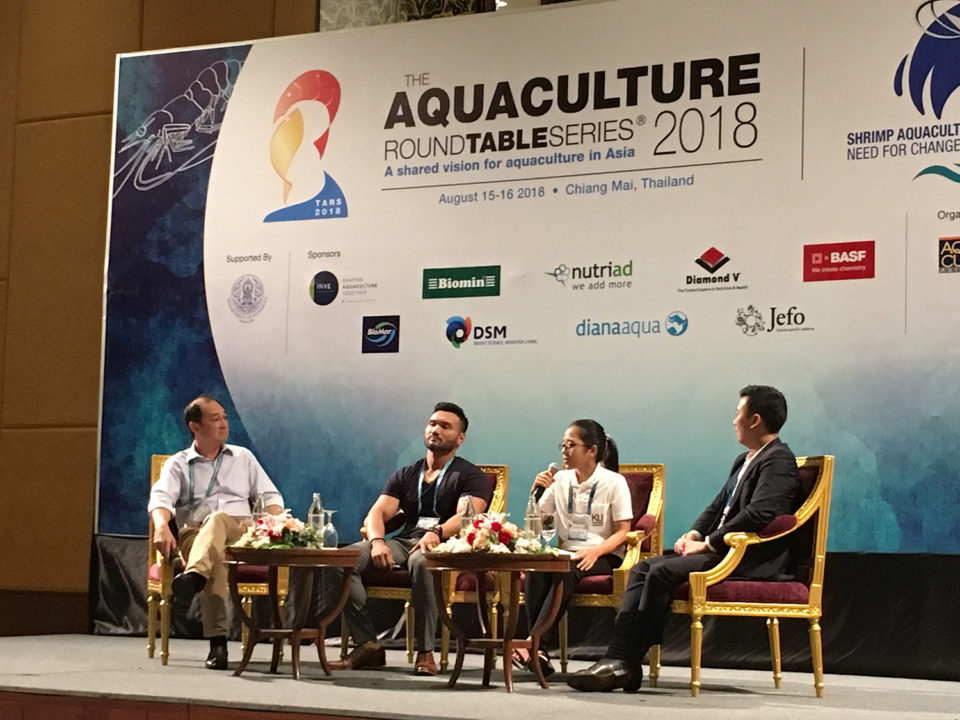
Nutrition and feeds
Fabio Soller (Diana Aqua, Thailand) discussed functional ingredients for modern shrimp feed and robust animals, and reported that marine ingredients are losing space in aquafeeds because of sustainability and market price competition concerns, which are changes the pressure feed companies and formulators to change their traditional diet formulations to be competitive without risking quality and functionality losses in their products.
Protein hydrolysates are functional solutions that could help feed formulators shift from marine raw materials to new, alternative ingredients and to standardize feed performances. Their high peptides and free amino acids contents are key drivers for a balanced and performing diet that is fast accepted by shrimp, thus reducing feed waste and water pollution.
“Over the long run, a properly balanced diet enhanced with these high-quality ingredients will lead to crucial returns to the feedmill and the farmer in terms of animal production and profit, strengthening their market competitiveness and environmental sustainability,” he remarked.
Waldo Nuez-Ortin (Nutriad, Spain) reported on the search of novel ingredients and functional additives to power the shrimp feed of the future. He presented an overview an overview of novel ingredients and functional feed additives that can enhance the nutritional value of current shrimp feeds and contribute to promoting and securing high production efficiency and good health of shrimp in the future.
He concluded that “the supply and availability of many nutrients resulting from the incorporation of novel ingredients will not be comparable to fishmeal- and fish oil-based feeds, and thus the use of functional feed additives with digestibility-enhancing properties will remain as an important strategy to extract more nutritional value of each kilogram of feed.”
John Tinsley (BioMar, Ecuador) discussed the road towards sustainable shrimp industry, and challenges and opportunities in Latin America from a feed producer’s perspective. He provided an overview of the current status of shrimp farming in Latin America, focusing on trends in production, feeds and certification; and also summarized how the feed industry is playing an ever-stronger role in supporting the industry and its longevity.
Tinsley reported that the shrimp production in Latin America is diverse and despite the geographical proximity, experiences vary. Central American production is stabilizing after a several turbulent years but the industry in Ecuador is challenging global trends and increasing production year on year. In 2017 it exported approximately 450,000 MT of shrimp worth over $3 billion, a 16 percent increase compared to 2016.
As a result, the world’s largest feed producers have established a presence in Ecuador, and over the next few years there will be an increase in research and development into feeds designed to safeguard industry development. “Currently we are seeing research into functional feeds to promote health and welfare, feeds designed for nursery phases and feeds that utilize novel raw materials,” he said.
Investment
Tim Noonan (Cargill Animal Nutrition) shared an investor’s perspective on Asia’s shrimp industry, and compared the rationale for institutional investors for investing in Asia’s farmed shrimp production industry versus competing and alternative destinations for capital, including components of the food/feed industries, other aquaculture species like tilapia and salmon, and other shrimp-producing regions like Latin America.
He highlighted “what must be true” for Asia’s farmed shrimp production industry to attract significantly greater investments, remarking on challenges that historically have inhibited investment. For shrimp farmers seeking capital, these solutions include a greater focus on – and improved capabilities around – management of disease risk, traceability and other consumer-driven demands, and environmental and social welfare.
“Manage disease to reduce shrimp price volatility,” he said.
Noonan also used the example of Norway’s salmon industry, which has a demonstrated track record in building and scaling professionalized companies that meet investors’ requirements in these areas, which has led to healthy investor demand for salmon producers’ shares on the Oslo Stock Exchange and elsewhere.
“If Asia’s farmed shrimp industry can repeat key components of Norway’s success, it could become the next frontier for food/feed-focused institutional investors, allowing privately held shrimp producers to pursue more attractive capital raisings in both private and public markets,” he said.
Now that you've reached the end of the article ...
… please consider supporting GSA’s mission to advance responsible seafood practices through education, advocacy and third-party assurances. The Advocate aims to document the evolution of responsible seafood practices and share the expansive knowledge of our vast network of contributors.
By becoming a Global Seafood Alliance member, you’re ensuring that all of the pre-competitive work we do through member benefits, resources and events can continue. Individual membership costs just $50 a year.
Not a GSA member? Join us.
Author
-

Darryl E. Jory, Ph.D.
Editor Emeritus
Global Aquaculture Alliance
Related Posts
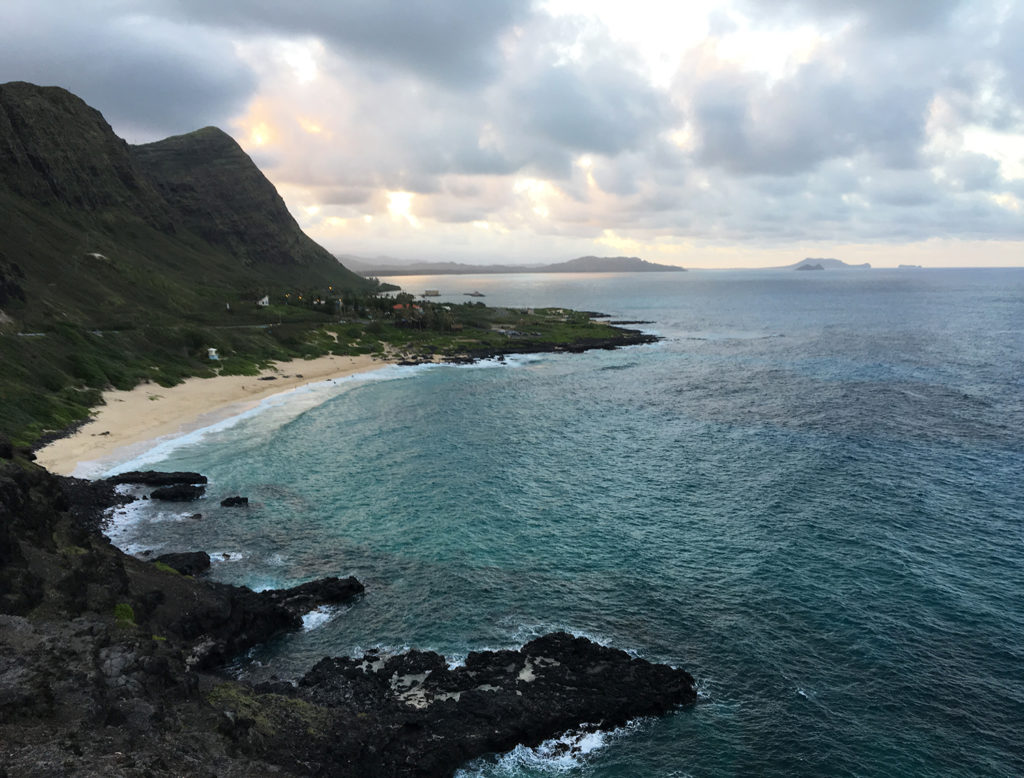
Health & Welfare
Born in Hawaii, SPF broodstock shrimp industry faces globalization
The next step for shrimp breeding will be developing animals that aren’t just disease-free, but increasingly resistant to multiple pathogens. The industry is globalizing, with suppliers setting up shop overseas. But its birthplace will always be Hawaii.
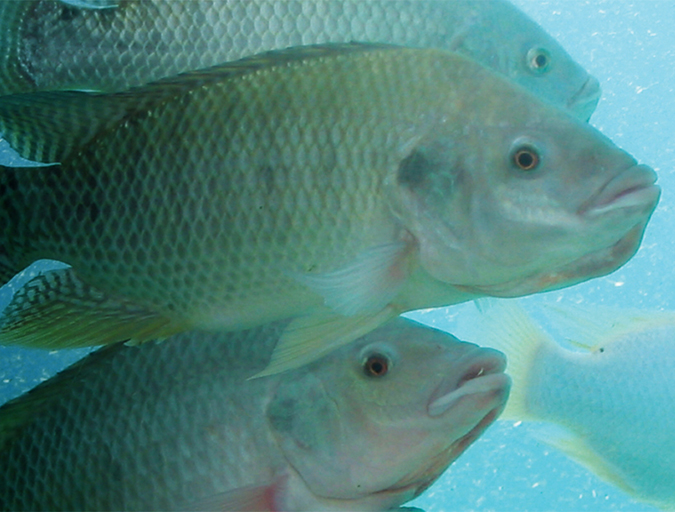
Health & Welfare
Aquaculture disease experts to download at GOAL 2016
At this year’s GOAL conference in Guangzhou, China, leading animal welfare and aquatic animal disease experts will share knowledge about how producers can gird their operations. EMS, EHP, streptococcosis and sea lice will be addressed, as will the latest in area management.
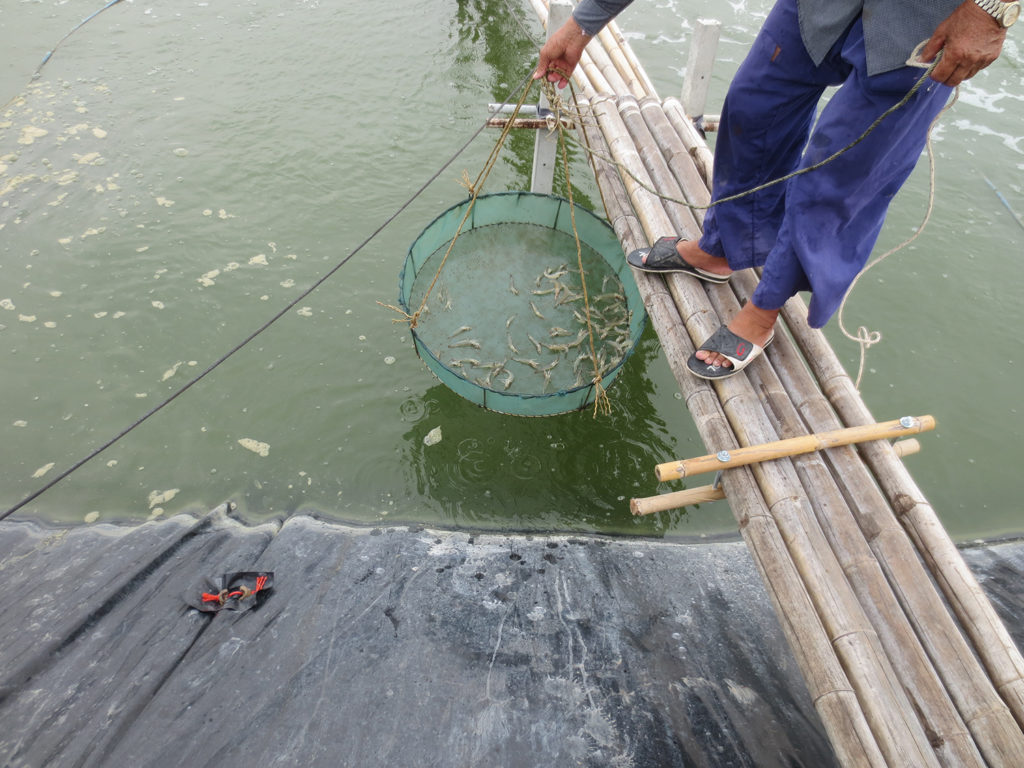
Health & Welfare
The unmet promise of pondside PCR
A new generation of technology, portable PCR, offers potential for affordable, immediate, pondside diagnosis in easy-to-use handheld kits. But will it live up to the hype?
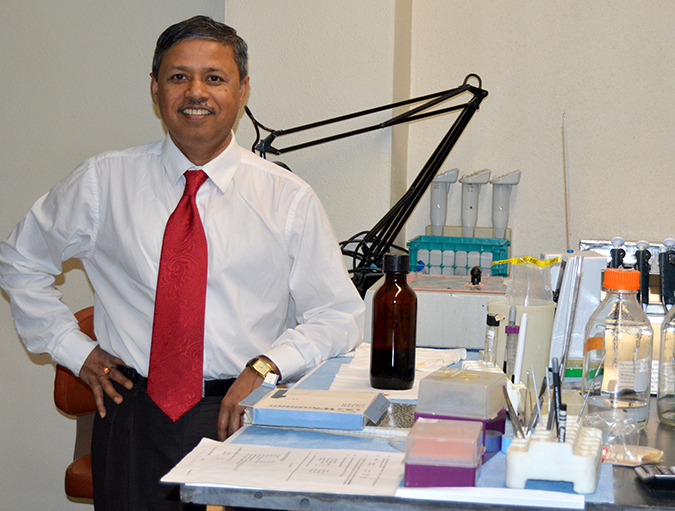
Health & Welfare
Big shoes to fill: Dhar takes reins at shrimp pathology laboratory
Arun Dhar, Ph.D. will attempt to fill the “big shoes” of Dr. Donald Lightner at the University of Arizona’s Aquaculture Pathology Laboratory, where the shrimp disease EMS was diagnosed.


